Squaresville
For some reason there has been a confluence of overshot in the studio these last few days, and the issue of “Squaring” has arisen. As I mentioned in my last blog post we have a new baby in the extended family, and I wanted to weave her a “blankie”. I thought way back to when I was a new mom, and I remembered how sensitive and concerned I was about providing a healthy environment for my wee ones. I immediately decided that I wanted to use the “American Maid” yarns from Lunatic Fringe for this blanket. They are naturally-colored cottons grown and spun in the US using integrated pest management/sensitive water use and low chemical input. The awesome bonus is that they are BEAUTIFUL and very soft.
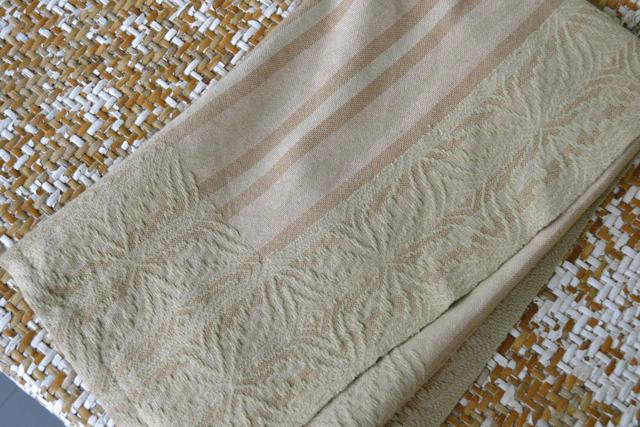
There are four colors of 10/2 in the warp – dark green, light green dark brown and light brown. I used the light brown as the tabby weft and the dark green doubled as the pattern weft. As you can see “dark” and “light” are relative. I wanted to have an overshot border with the plain weave stripes as the center.
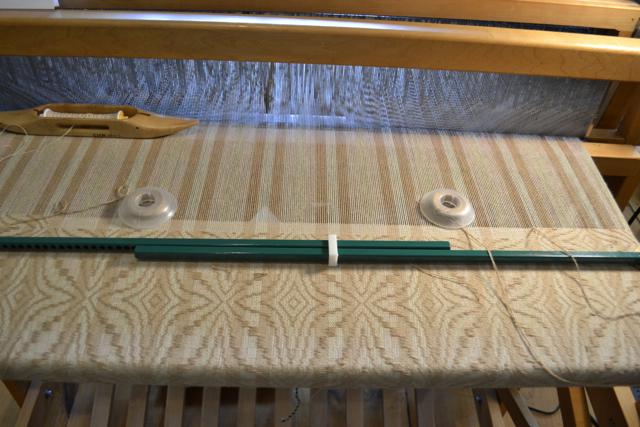
so I used the little plastic bobbins (above) to carry my pattern weft for the side borders. Here’s where the squaring question comes in – as you can see the bottom border is not squared. I beat it hard, set it for plain weave and used a tabby weft half the size of the pattern, but couldn’t square it. I didn’t want to use a finer tabby because I wanted to use only the American Maid and they don’t have finer than 10/2 at Lunatic Fringe. I used a temple to make sure draw-in didn’t prevent me from beating the weft in, but I still couldn’t square it. When I proceeded to weave the side borders, I got a much better square because there was only pattern resistance at the borders.
The same thing happened with a towel that one of my students designed – totally beautiful, but not square. I realize that opening the sett might help, but other than that what advice??? I tried removing a couple of treadling repeats, but the design doesn’t have the same flow. Please weigh in if you have answers. 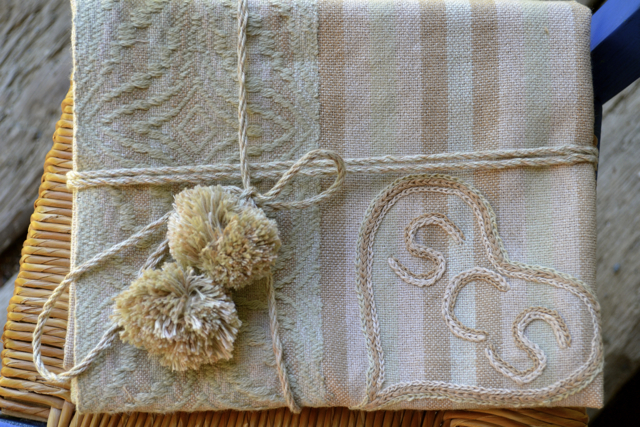
Other projects: I wanted another project for my September “Shifting Threads” class at Vavstuga, and I wanted to use the Mobelatta, tightly-spun wool yarn.
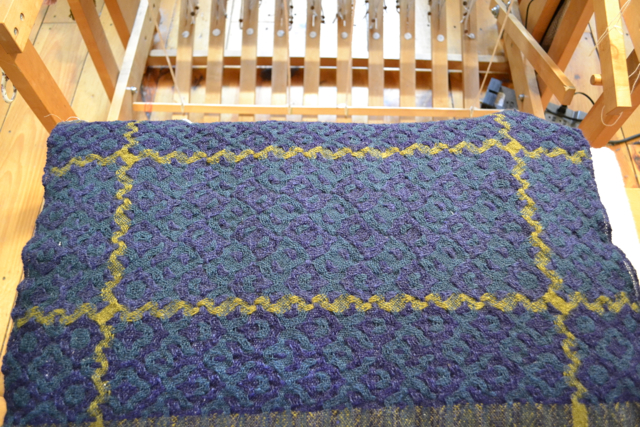
I thought a loom bench cover might be perfect. The tightly-spun yarn would wear well, and if i put a relatively wide warp on the student would only have to weave 15″ for the top and 16 – 17″ in plain weave for the bottom. I don’t think we will have time for the bands, but they work great as straps with snaps.

Remind me to clip threads before the “photo shoot” next time.
I also use a rug pad to prevent slipping. 
The photo makes the buttons look askew – but they’re not. Do you think it looks strange that it isn’t as wide as the bench. I like the ric rac effect – not sure about the yellow green though.

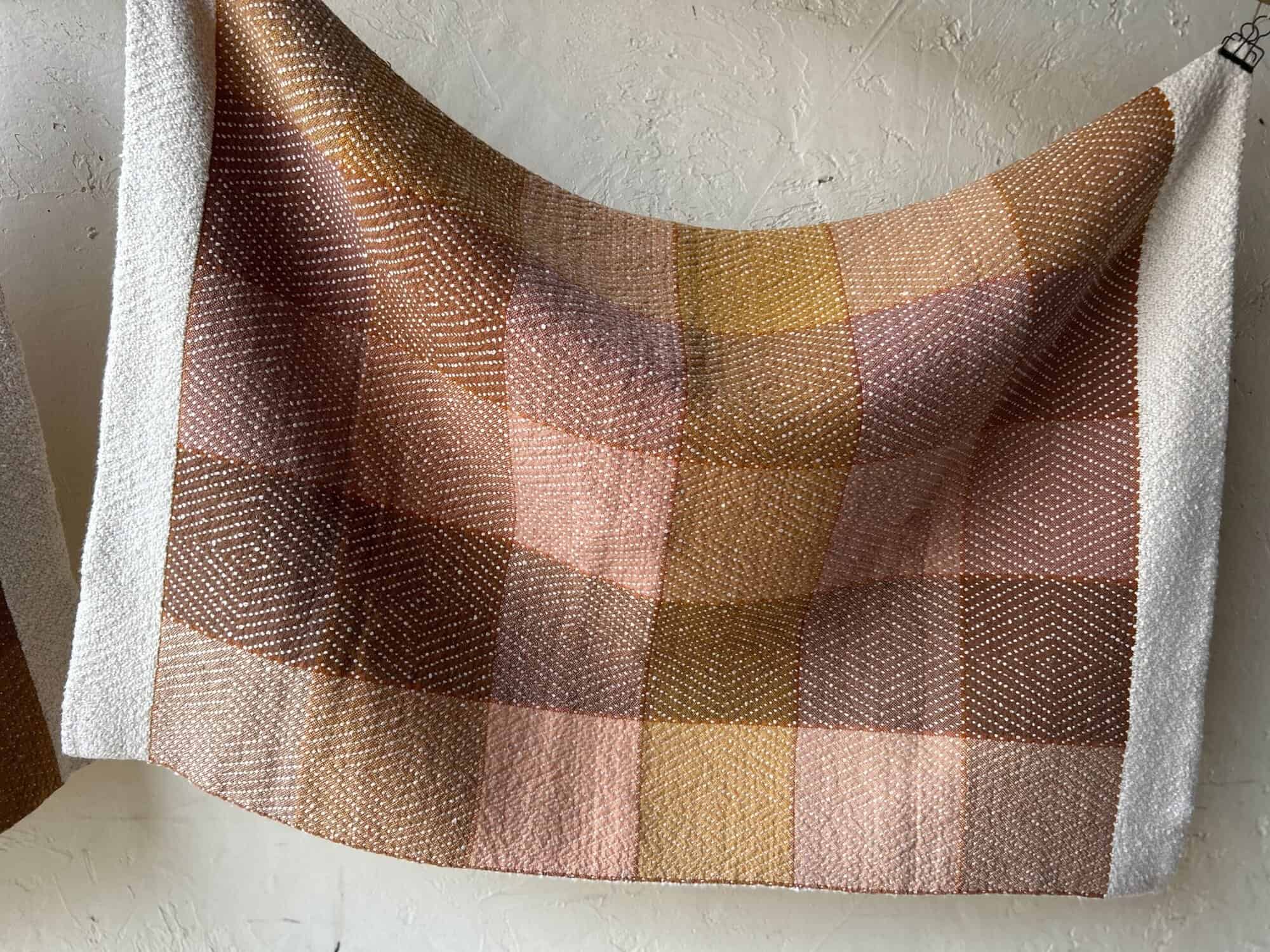
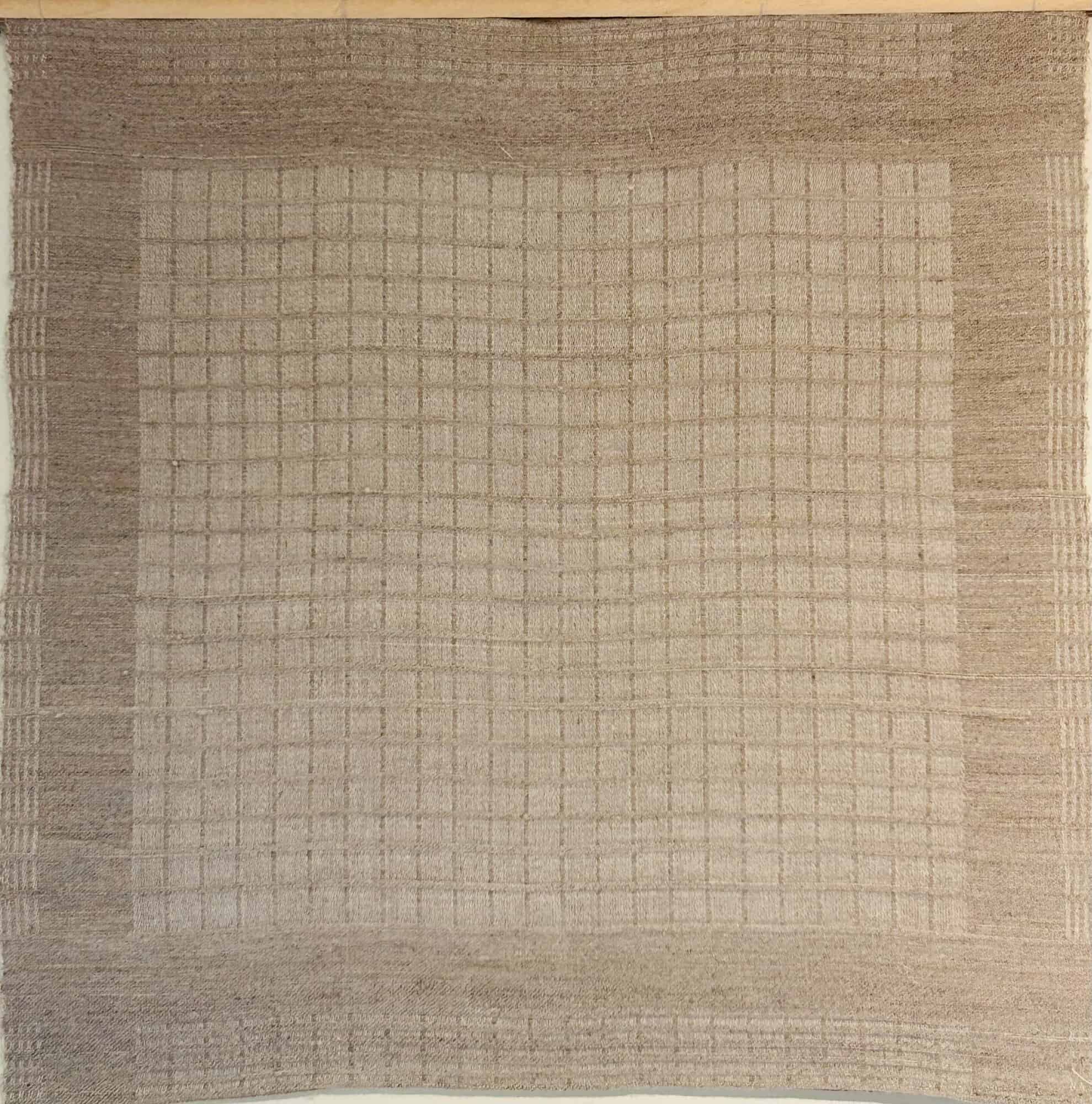
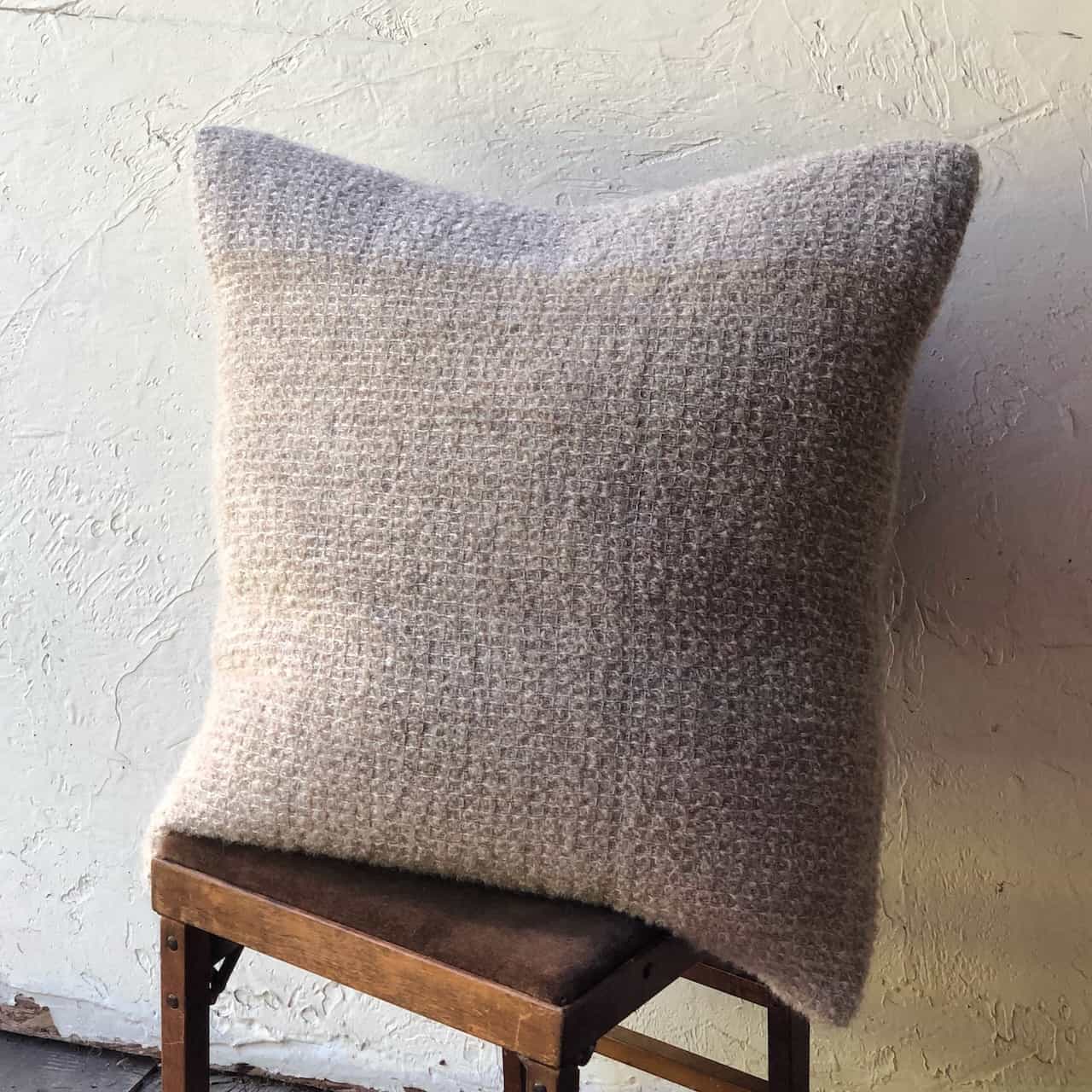
Laurie Mrvos
I love it. The ric rac is fun, and I like the color combo. I looks quite comfortable, as well.
Elisabeth Hill
Hey Laurie,
Thanks – it is very comfy! In fact, as I got up from the bench today I was thinking that I was minus some of the usual aches and pains . . . maybe the cushiony seat is making a difference? I made it as an idea for using some yardage – it would be great if it solved some of my aging body problems too!!
Kerstin in Sweden
The standard Swedish answer (found in most Swe books, so it isn’t “just me”): do as many pattern picks as needed to get it square. Cyrus (“Manual of Sweish handweaving”) actually explains that it impossible to know how many picks to use before sampling…
(Too late for this project, of course, but for the future?)
Elisabeth Hill
Thanks Kerstin,
I always appreciate an “it depends” answer. Turns out there a lot of room in the “rules” for individual judgement.
Debbie
Amen. Love the blankie!
Elisabeth Hill
Thanks Debbie,
See you at Convergence??